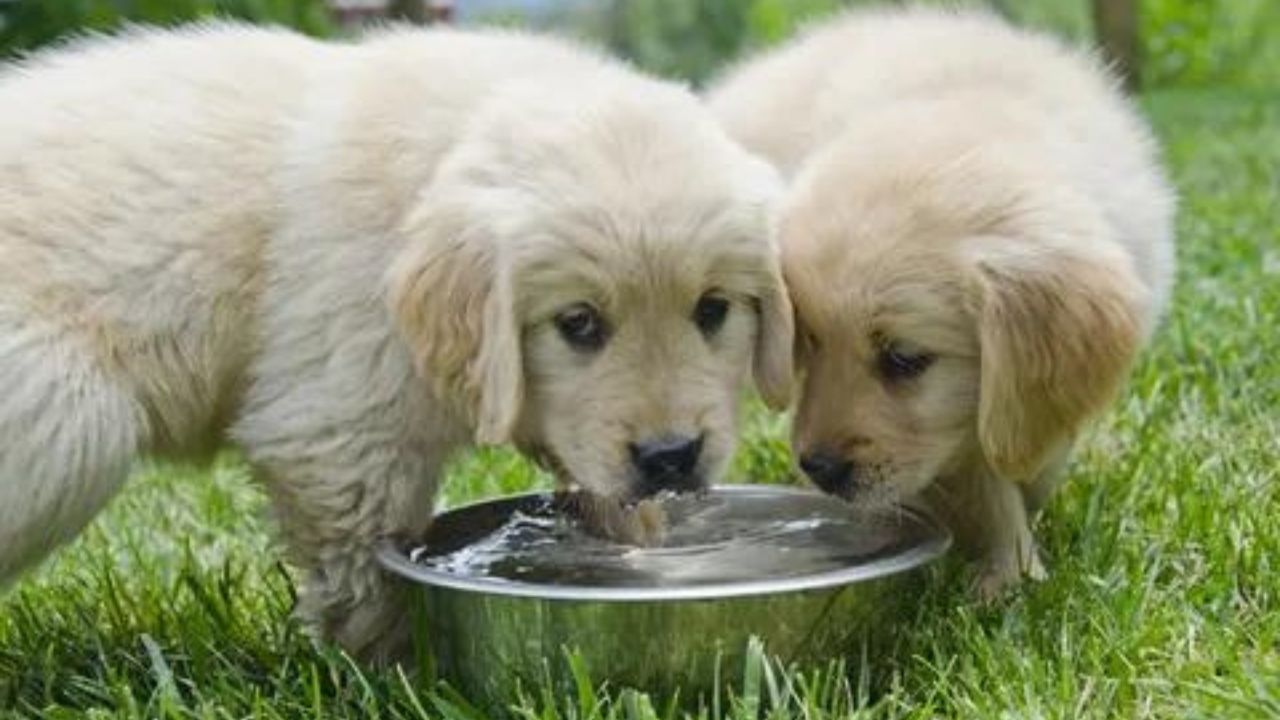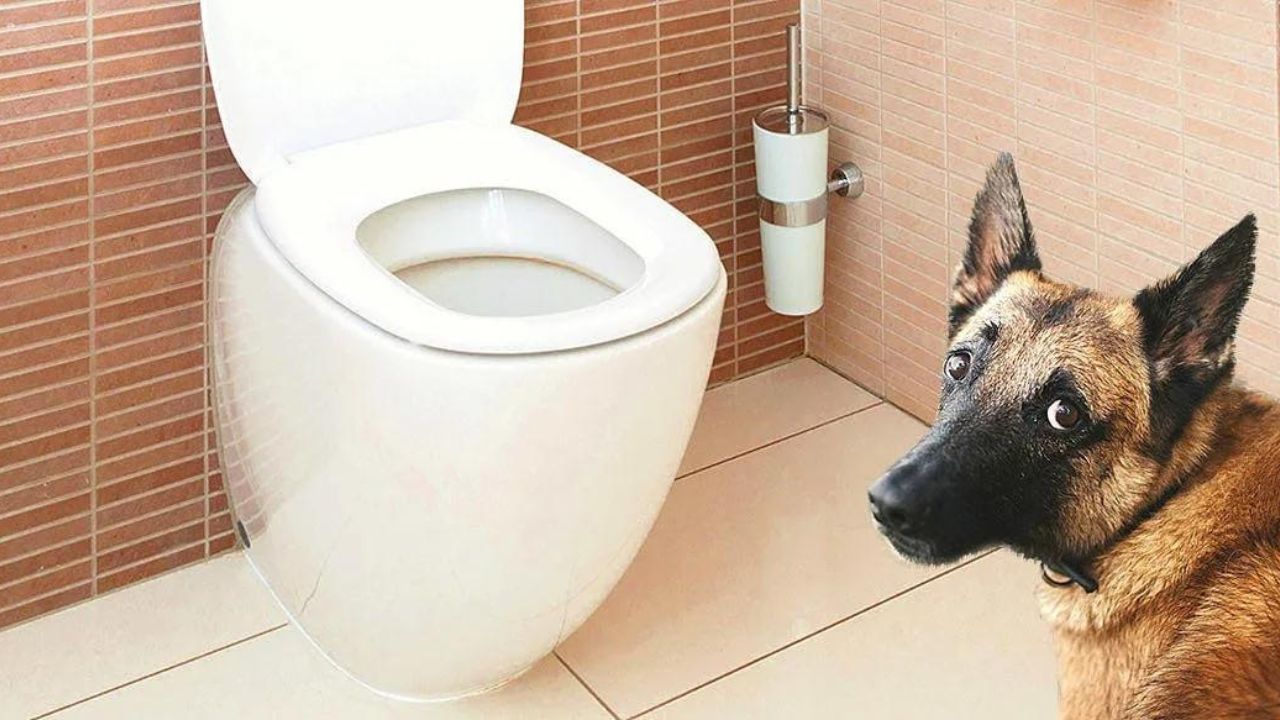
It’s imperative to give your pet the finest care possible as a responsible pet owner, and being well-hydrated is a vital component of their well-being. “When can puppies drink water?” is a query that new puppy parents frequently have. We will discuss the elements that affect a puppy’s water requirements, the value of staying hydrated, and the safest methods for giving your pet access to water.
The Importance of Water for Puppies
Learn how important water is to puppies’ health and well-being. Discover the many benefits of giving your pet access to clean, fresh water, including how it can stimulate growth and development, control body temperature, and ward off dehydration.
Age Matters
If a newborn puppy is nursed by their mother, they don’t require any more water.
About three or four weeks of age is when the weaning process usually begins, at which point you can progressively add water.
Weaning Process

The gradual switch from breast milk to solid food is known as weaning.
You may encourage the puppy to drink by providing water in tiny, shallow bowls throughout this procedure.
Breed Variations
Large and giant breeds may have different needs than smaller breeds.
Consult with your veterinarian to understand the specific requirements based on your puppy’s breed and size.
Activity Levels
Compared to less active puppies, more active puppies could need more water.
Keep an eye out for symptoms of dehydration, such as fatigue or parched gums, and modify your water consumption appropriately.
The Importance of Hydration
Developmental Growth
Adequate water intake is crucial for the proper development of a puppy’s organs, muscles, and overall growth.
Temperature Regulation
Dogs use panting, which necessitates enough water, to control their body temperature.
Puppies may require extra water to remain cool during strenuous exercise or in warm areas.
Digestive Health
Water is necessary for a puppy’s diet for the nutrients to be properly absorbed and digested.
Constipation and other digestive problems can result from consuming too little water.
Best Practices for Introducing Water
Gradual Introduction
Start by offering small amounts of water during the weaning process.
Gradually increase the quantity as the puppy adjusts to the new routine.
Monitor Hydration Levels
To determine hydration levels, observe your puppy’s behavior and the color of their urine.
If you notice any signs of dehydration, contact your veterinarian.
Clean, Fresh Water
Ensure that the water you provide is clean and fresh.
Wash water bowls regularly to prevent bacterial growth.
Scheduled Water Breaks
Establish a routine for water breaks, especially after meals and playtime.
Avoid leaving water out for extended periods, as this can lead to overconsumption.
Can Puppies Drink Tap Water

Puppies can safely drink tap water in most situations, but there are some things to keep in mind. Municipal water supplies are usually free of dangerous pollutants because they adhere to strict safety regulations. On the other hand, water in some areas might contain a lot of minerals or extra chemicals, like chlorine. It’s a good idea to inquire about water quality with your local water authority before giving your puppy tap water. If you are concerned or reside in a hard water area, you may want to consider providing bottled water or using a water filter.
Common Mistakes When Giving Water to Puppies
While keeping your puppy well-hydrated is an essential part of responsible pet care, common errors can unintentionally harm their health. Overhydration is a common mistake made by well-meaning owners who leave water out all the time, which results in overconsumption.
This may cause an upset stomach or, in more serious situations, toxicity in the water. Conversely, underestimating a puppy’s water requirements is also a common error, particularly in hot weather or when the puppy is more active.
Time is also vital because some owners may neglect to provide water after meals or during playtime, depriving themselves of important chances to stay hydrated. Using a bowl that isn’t suitable, like one that is deep or unstable, can scare puppies or be dangerous.
Best Way to Introduce Water
Water introduction for puppies should be done gradually and is crucial to their general health. Start the transition during the weaning process at three or four weeks of age. Start small and give your puppy time to get used to the idea of having water in a shallow bowl.
As your puppy gets bigger, gradually add more water and eventually move to a shallow, accessible, stable bowl. To promote water consumption after meals, place the water bowl close to their food. As you watch your puppy’s behavior, be patient and change the water’s availability to suit their needs.
What Should I Do If My Puppy Suffers From Dehydration
It’s critical to take immediate action if you observe symptoms like fatigue, sunken eyes, dry gums, or excessive panting. First and foremost, report the observed symptoms to your veterinarian and ask for advice.
Encourage your puppy to routinely drink small amounts of water to combat dehydration at home. Make it easily accessible by using a shallow bowl, and to tempt them, try adding a small amount of low-sodium chicken broth.
Reintroduce their regular food gradually, in small portions, to make sure they get all the nutrients they need. Your puppy needs to be examined by a veterinarian for a professional evaluation and possible intravenous fluid administration if it refuses to drink or exhibits severe symptoms.
During hot weather, avoid strenuous activities and provide a cool environment to prevent further dehydration. Regularly monitor their hydration status and seek immediate veterinary attention if symptoms persist or worsen.
Can My Puppy Drink Less Water Than Average
Just like people, puppies have distinct personalities, peculiar habits, and varying water intakes. Puppies frequently drink less water than adults do, and there are several reasons why this might be the case.
First and foremost, the puppy’s breed and size are important considerations. It’s possible that smaller breeds naturally use less water than larger ones. Individual health and activity levels also affect how much water is consumed. A puppy that is not as active as a highly active one may not feel as thirsty.
There are environmental factors as well. Puppies may require less water to stay hydrated in cooler climates than in warmer ones.
What Are The Risks of My Puppy Drinking Too Much
While puppies are undeniably adorable, their playful and curious nature may lead them to unexpected situations, including the risk of drinking too much water. Excessive water consumption in puppies can pose various health concerns. One primary concern is water intoxication, a condition resulting from an abrupt intake of large amounts of water that dilutes the body’s electrolytes. Puppies, in their boundless energy and excitement, might not recognize the need to moderate their water intake.
Puppies, especially smaller breeds, are more susceptible to this risk due to their size and body weight. To mitigate the risk, pet owners should monitor their puppy’s water intake, provide controlled access, and avoid overindulgence during play or exercise.
Conclusion
Puppyhood is a wonderful journey full of endless moments of joy and discovery. You can ensure a lifetime of hydrated, tail-wagging moments with your pet by knowing when and how to introduce water, keeping an eye on intake, and being aware of any potential risks.
FAQ
At What Age Can I Start Giving My Puppy Water?
Puppies can usually start drinking water when they are around three to four weeks old. Before this age, they receive hydration from their mother’s milk.
How Much Water Should I Give My Puppy?
The water intake varies based on the puppy’s age, size, and activity level. It’s generally recommended to provide small amounts of water throughout the day and adjust based on individual needs.
Can I Mix Anything In My Puppy’s Water For Flavor?
It’s generally best to provide clean, fresh water without additives. Some puppies may be sensitive to flavored additives, and it’s crucial to avoid substances that could be harmful.
When Can I Introduce Water During the Weaning Process?
Water can be introduced gradually during the weaning process, typically around three to four weeks of age, alongside the transition to solid food.
What Signs Indicate That My Puppy Is Dehydrated?
Signs of dehydration in puppies include lethargy, dry gums, sunken eyes, and excessive skin tenting. If you suspect dehydration, consult your veterinarian promptly.






